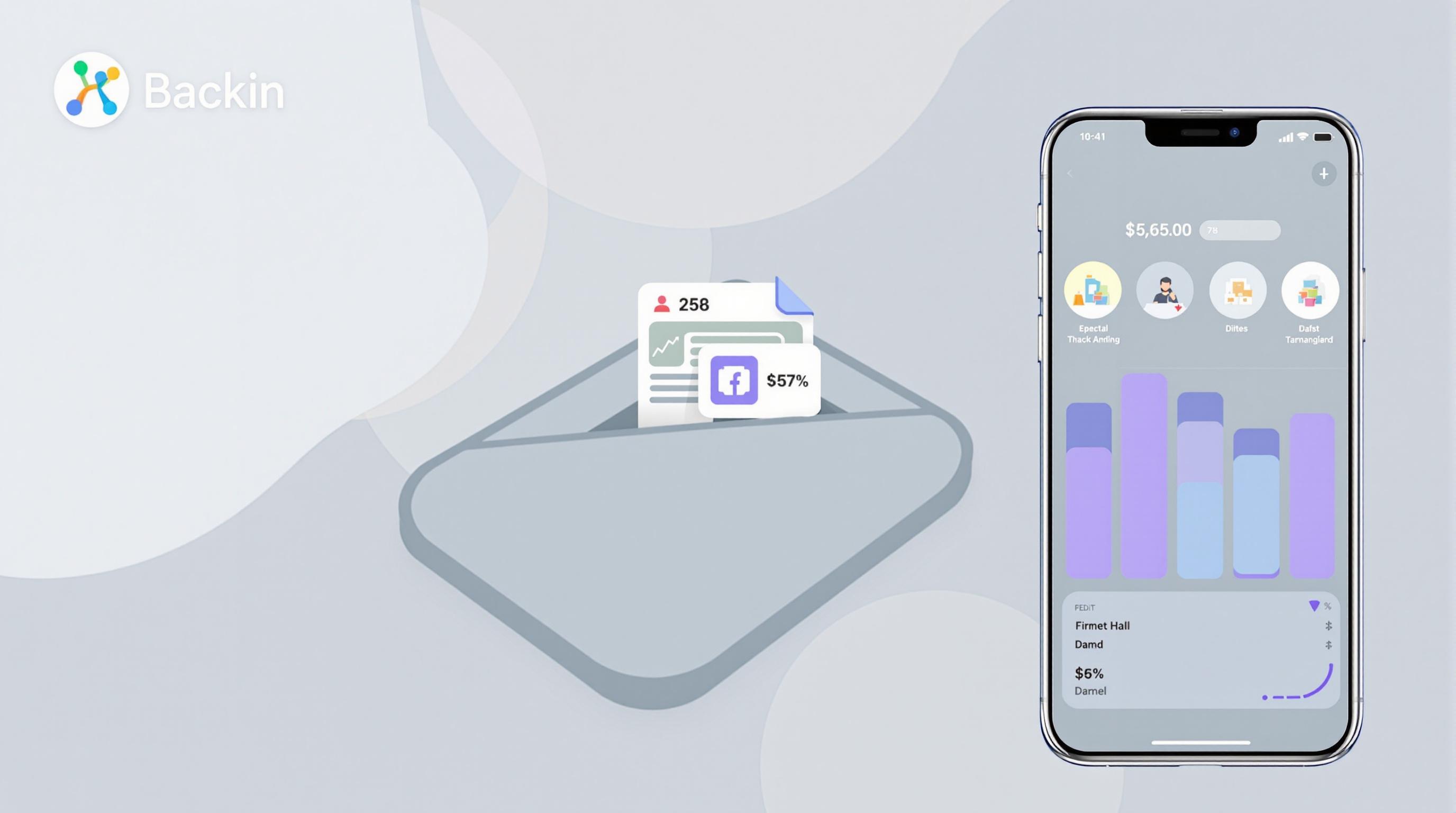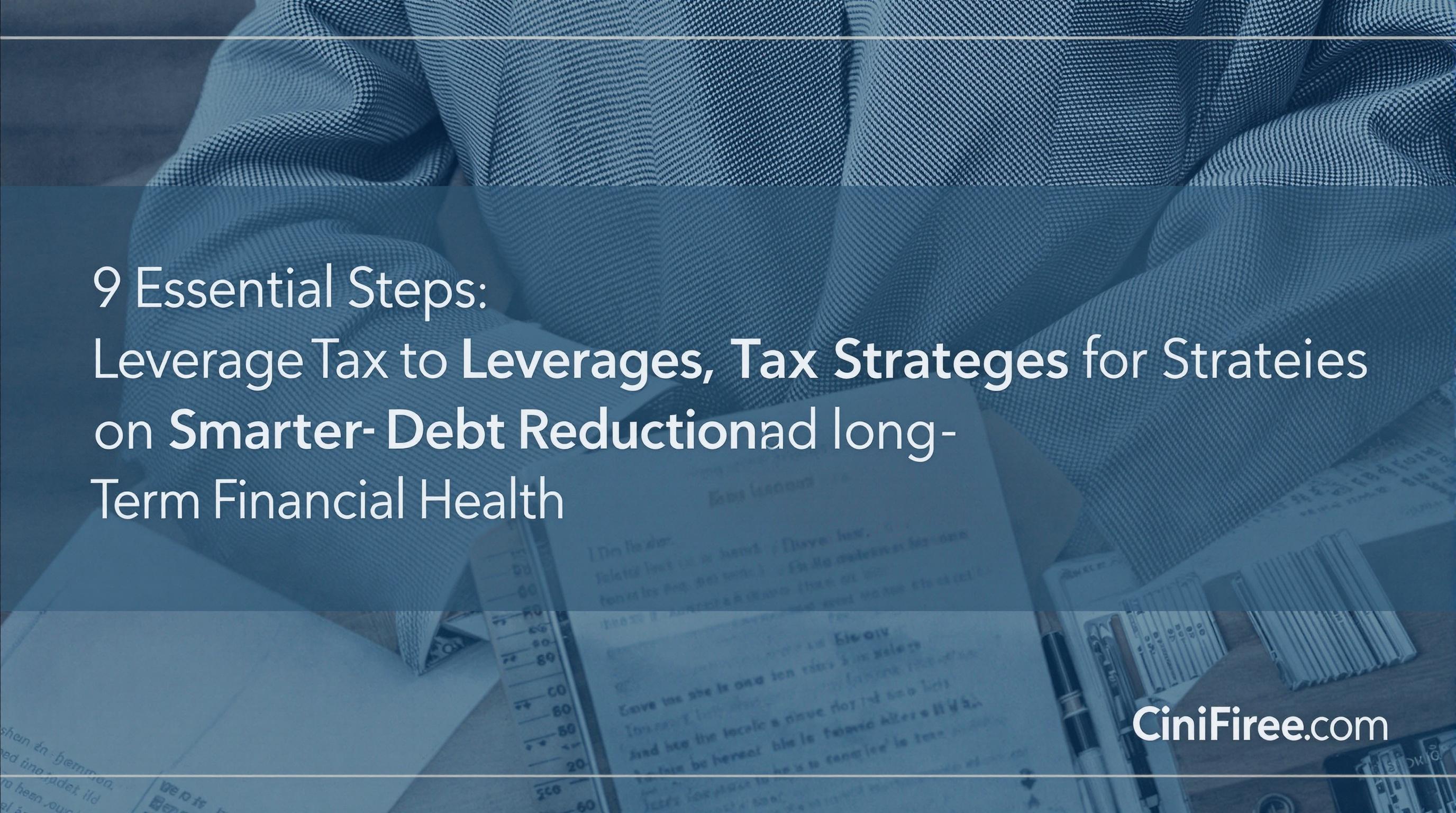Featured Articles
- 9 Essential Steps to Leverage Tax Strategies for Smarter Debt Reduction and Long-Term Financial Health
- Beyond Budgeting: The Surprising Role of Minimalism in Effective Debt Management
- "Debt Management in the Age of AI: Can Algorithms Help You Break Free from Financial Chains?"
- Harnessing the Power of Mindfulness: A Revolutionary Approach to Debt Management and Financial Freedom
- The Psychology of Debt: How Emotional Spending Fuels Financial Mismanagement
9 Essential Steps to Leverage Tax Strategies for Smarter Debt Reduction and Long-Term Financial Health
9 Essential Steps to Leverage Tax Strategies for Smarter Debt Reduction and Long-Term Financial Health
9 Essential Steps to Leverage Tax Strategies for Smarter Debt Reduction and Long-Term Financial Health
1. Understand Your Tax Bracket
Knowing your tax bracket is the foundational step for implementing tax strategies to reduce debt. Tax brackets determine the rate at which your income is taxed, influencing how much of your earnings you can allocate toward debt repayment. If you’re aware of your tax bracket, you can better plan deductions and credits that lower your taxable income, effectively freeing up more money to pay down debt.
For example, contributing to tax-advantaged accounts such as IRAs or 401(k)s can reduce your taxable income. This means you end up paying less in taxes and can divert those savings toward debt. Moreover, understanding your tax bracket helps in prioritizing which debts to pay off first, especially if some debt payments come with tax implications.
According to the IRS, staying informed about your tax bracket allows you to make informed decisions about withholdings and estimated tax payments, avoiding penalties and ensuring optimal cash flow for debt management (IRS, 2023).
2. Maximize Tax-Deductible Expenses
One of the most effective ways to reduce taxable income is by maximizing tax-deductible expenses. Interest paid on certain types of loans, such as mortgage interest or student loan interest, can usually be deducted from your taxable income. Taking full advantage of these deductions lowers your tax liability and leaves more funds available to pay down other debts.
Keep accurate records of all deductible expenses throughout the year. This includes charitable donations, medical expenses (above a certain threshold), business expenses for self-employed individuals, and other allowable deductions. Consulting with a tax professional ensures that you do not miss out on any possible deductions.
According to TurboTax, effectively managing and tracking deductible expenses can save thousands of dollars annually and assist in reallocating funds toward reducing high-interest debts more quickly (TurboTax, 2023).
3. Utilize Retirement Account Strategies
Retirement accounts such as 401(k)s and IRAs offer not only long-term growth potential but also important tax advantages. Contributions to traditional retirement accounts are typically tax-deductible, lowering your taxable income for the year. This can increase your available cash flow for aggressive debt reduction.
Additionally, Roth IRAs, which are funded with after-tax dollars, offer tax-free growth and withdrawals in retirement. While contributions to Roth accounts don’t reduce current taxable income, managing contributions strategically between Roth and traditional accounts can help optimize your tax situation over time.
According to the Fidelity Investments guide, balancing both types of retirement accounts allows for tax diversification, potentially reducing your tax burden during retirement and freeing resources now to pay off debt more effectively (Fidelity, 2023).
4. Leverage Tax Credits Wisely
Tax credits directly reduce the amount of tax you owe and can be more financially beneficial than deductions. Some tax credits, such as the Earned Income Tax Credit (EITC), Child Tax Credit, and education credits, may even provide refunds that increase your cash inflow.
Using these credits strategically can provide extra funds that supplement payments toward debt, accelerating the payoff process and improving your financial health. It’s important to verify eligibility requirements and file correctly to capture these benefits.
The IRS warns that not all taxpayers qualify for all credits, so it is crucial to consult IRS resources or tax professionals to maximize credit claims without incurring errors or penalties (IRS, 2023).
5. Implement a Tax-Optimized Debt Repayment Plan
Designing a debt repayment strategy that considers tax implications can enhance your financial outcomes. For instance, prioritizing payment of non-deductible debt before tax-deductible debt might be more efficient. Conversely, taking advantage of tax-deductible interest could mean restructuring debt payments accordingly.
Incorporate tax savings into the repayment plan by calculating how much your adjusted tax payment frees up, then allocating that amount toward higher-interest debts. This combined approach ensures you reduce debt principal faster while benefiting from tax advantages.
A study by the National Foundation for Credit Counseling (NFCC) suggests that detailed planning accounting for tax effects leads to faster and smarter debt clearance (NFCC, 2022).
6. Consider Tax Implications of Debt Consolidation
Debt consolidation loans can simplify repayment but may also have tax consequences. For example, the forgiven or discharged debt in some situations can be considered taxable income. Understanding these implications before consolidating helps avoid unexpected tax bills.
If debt consolidation includes refinancing to lower interest rates, the tax-deductibility of new loan interest may differ from your original debts. Carefully reviewing these factors with a tax advisor ensures consolidating debt will truly benefit your financial health.
The Consumer Financial Protection Bureau notes that assessing tax implications is a vital step in confirming the affordability and benefit of a consolidation plan (CFPB, 2023).
7. Use Tax Refunds Strategically to Reduce Debt
Tax refunds provide an excellent opportunity to make lump-sum payments against outstanding debt, reducing principal balances and accruing less interest over time. Planning to use your refund this way can significantly accelerate debt repayment.
Instead of spending tax refunds on nonessential items, creating a disciplined refund allocation plan directed at high-interest debts can improve cash flow and long-term financial resilience. Automating savings or payments immediately after receiving a refund ensures consistency.
The IRS estimates that average refund amounts can range into thousands of dollars, representing substantial debt reduction potential if used wisely (IRS, 2023).
8. Optimize Business Tax Strategies if Self-Employed
Self-employed individuals have additional opportunities to reduce taxable income through business expense deductions, retirement contributions, and health savings accounts. Leveraging these tax strategies increases available cash for debt paydown.
Tracking deductible expenses carefully and maximizing allowable write-offs, such as home office costs, business travel, and equipment purchases, lowers taxable income. Additionally, contributing to SEP IRAs or solo 401(k)s offers more flexibility in retirement savings and current tax benefits.
According to the Small Business Administration, proactive tax planning for self-employed individuals can significantly impact both debt reduction capability and long-term financial security (SBA, 2023).
9. Stay Informed on Tax Law Changes
Tax laws frequently change, sometimes creating new opportunities or affecting existing strategies. Staying updated on tax codes, deductions, and credits ensures you can adapt your debt reduction plan to benefit from current laws.
Subscribing to IRS updates, consulting with tax professionals annually, and reviewing financial plans regularly protect you against missing out on valuable tax benefits. This vigilance supports smarter debt management and helps maintain financial health.
The American Institute of CPAs recommends ongoing education and consultation to navigate tax law changes effectively and leverage them for personal financial advantage (AICPA, 2023).
Bonus: Combine Tax Strategies with Budgeting for Holistic Financial Health
Implementing tax strategies should complement strong budgeting and spending discipline. Reducing unnecessary expenses, increasing income streams, and using tax savings smartly creates a comprehensive plan for debt reduction and sustained financial wellness.
Integrating financial literacy, tax awareness, and proactive money management delivers the best results. This holistic approach enables you to tackle debt efficiently while preparing for future financial goals such as retirement, education, and emergency funds.
According to a report from the Financial Literacy and Education Commission, combining these elements fosters long-term financial health and resilience (FLEC, 2022).




